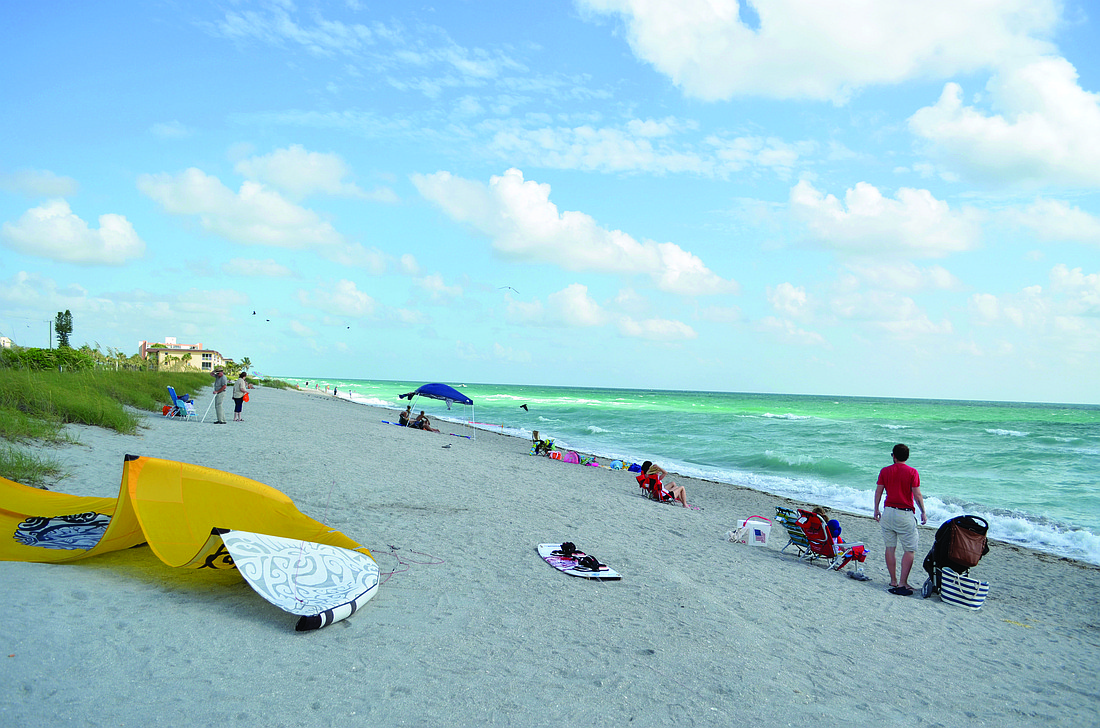- April 25, 2024
-
-
Loading

Loading

The South Siesta Key Beach Restoration project is under a tight deadline to renourish the beaches before next year’s turtle nesting season.
The project aims to renourish about two miles of sand-starved beaches on the south Siesta shoreline, including Turtle Beach.
The first renourishment of South Siesta was completed about seven years ago, so the beach is due for another replenishing, said Laird Wreford, county coastal resources manager.
The first time, the project cost $11 million to $12 million to pump 1 million cubic yards onto the beach. This time, not as much sand will be required, Wreford said. (The contractor will determine the total amount needed.) However, the county could see some cost increases. When Hurricane Sandy hit the eastern coast of the country in 2012, it drove up the demand for sand renourishment services. Even two years later, that price increase could still exist.
Since 2007, about 40% of that sand has eroded away, which is normal, Wreford said.
The project is still in the permitting stage, although the environmental protection division, a part of the county’s planning and development services, has found a sand source about eight or nine miles offshore in the Gulf. This location will provide sand that best matches the existing beach in terms of color, volume and grain size. The county still has to put the project out to bid.
“It’s going to be ambitious,” Wreford said.
He’s hoping to start pumping the sand for transport by January; the project must be completed before sea turtle nesting season, which begins May 1.
The permits would have to be granted by the end of October or early November to have enough time to secure a contractor and start the sand-moving process.
Wreford said replacing sand on an eroding beach is the “lesser of all evils.”
Building a seawall is about the only other option, he said, and it’s not as aesthetically pleasing or as low-impact on the environment as sand renourishment.
Beach renourishment provides “sacrificial sand” — sand that can be lost in storms and through natural erosion without threatening the buildings on the island near the coast.
“You lose the sand you replaced, but it’s better than losing infrastructure,” Wreford said. “You’re buying time.”
South Siesta Key is getting smaller, unlike its “wider and fatter” counterpart to the north on the more touristy Siesta Key beach, Wreford said. This erosion of the sand bank is caused by two factors: one natural and one man-made.
Point of Rocks, a natural part of the Siesta Key shoreline, sticks out into the Gulf. Because sand migrates and settles north to south, Wreford said, this point creates a barrier in the movement of sand down to South Siesta, which starves the south beach of sand and piles up sand on the north beach.
The second cause is more recent. Before Midnight Pass between Casey Key and Siesta Key was filled in December 1983, the flowing inlet of the Gulf into the pass created a natural kind of barrier to sand migration, Wreford said. Although not as strong a block as Point of Rocks, it helped some of the sand stay in Turtle Beach’s dominion. Filling in the pass eliminated this flowing barrier and now adds to the erosion problem.
This steady erosion wouldn’t be as concerning of an issue if not for the houses and infrastructure located so near the coastline, Wreford said.
If the project cannot secure the permits and contractor in time to pump the sand by February at the latest, the project will have to be delayed another 10 months.
“These areas are really in need,” Wreford said.
Turtle Beach receives a makeover
The parks and recreational side of Turtle Beach will be getting a makeover starting near the end of this year.
The Sarasota County Commission has already approved the design, and the budget for improvements is set at $724,000. However, the project has not gone out for bid yet because county staff is working on receiving proper permits, and they need an estimate from the county engineer, said Rob LaDue, interim manager for Park Planning and Capital Programs. The project will be presented to the Sarasota County Commission for approval in a few months.
Construction is expected to begin at the end of 2014 and last four to six months, Brie Ondercin, park planner for the Capital Program of Sarasota County Parks and Recreation, said.
New Features
• Thirty-five new parking spaces in a new lot
• New playground
• New handicap-accessible boardwalk over sand dune
• Two new two-pole picnic shelters
• Gazebo
• Kayak launch
• Rain garden
Sidewalks and pedestrian crossings will also be updated and improved. The gazebo and picnic shelters would be placed on the southern part of the park on Blind Pass Lagoon, where there are currently no shelters and no sidewalks. The new parking lot would be placed where the current playground is, and a new play area would be constructed on a site near the beach on the northern point of the 16.19-acre park. However, it will have to get approval to award a contract before construction beginnings.